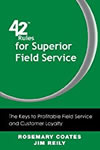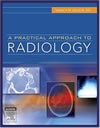All Articles
Accounting
Forensic Psychiatry
Alcohol, Tobacco & Other Drugs
Forgery & Fraud
Anger Management & Related Issues
Hazardous Materials
Animals
Healthcare Facilities - Hospitals
Archaeology - Archeology
Insurance Coverage Analysis
Attorney Fees
Internet Marketing
Banking
Legal Issues
Biokinetics
Logistics - Reverse Logistics
Computers
Manufacturing
Corrosion
Medical Records Review
Counseling
Meditation
Crime Scene Investigation
Mining
Criminology
Nursing
Digital / Crypto Currency
OSHA
Discovery & Electronic Discovery
Patents
Economics
Plastic / Reconstructive / Cosmetic Surgery
Elevators - Escalator - Automatic Doors
Police Practices & Procedures
Employment
Product Liability
Environment
Professional Malpractice
Ethics / Ethical Duties
Professional Skills
Expert Witnessing
Real Estate
Feng Shui
Recreation & Sports
Food & Beverage
Spirituality
Foot / Ankle Surgery
Supply Chain Management
Foreign Affairs - Geopolitics
Warnings & Labels
More...

ENGINEERING-PAGE ARTICLES MAIN PAGE
. Contact Us if you are interested in having your work published on our website and linked to your Profile(s).
All Articles
Accident Investigation & Reconstruction
Human Resources
Accounting
Injury
Alternative Dispute Resolution (ADR)
Internet Marketing
Biokinetics
Investigation & Surveillance
Blockchain Information
Jails - Prisons - Correctional Facilities
Boating
Laws & Procedures
Business Consulting
Legal Issues
Crime Scene Investigation
Logistics - Reverse Logistics
Digital / Crypto Currency
Manufacturing
Discovery & Electronic Discovery
Marine - Maritime
Economics
Marketing
Education & Schools
Mediation
Elevators - Escalator - Automatic Doors
Mining
Energy - Utilities
Neuropsychology
Engineering
Obstetrics - Gynecology (OBGYN)
Engines (Combustion - Diesel)
OSHA
Enterprise Resource Planning (ERP)
Plastic / Reconstructive / Cosmetic Surgery
Environment
Police Practices & Procedures
Family Issues
Premises Liability
Feng Shui
Product Liability
Forensic Analysis
Professional Skills
Forensic Psychiatry
Radiology
Forensics
Spirituality
Healthcare Facilities - Hospitals
Terrorism - Homeland Security
Hotels & Hospitality
Underwriting
More...
Featured Articles
There are no active articles here at this time. Please use the search bar, try another category, or contact us if you would like to contribute an article.
This Article is unavailable. Contact Us
Search articles by title, description, author etc.
Sort Featured Articles
Featured resources
Speech in the User Interface: Lessons...
by William Meisel, PhD
42 Rules for Superior Field Service:...
by Rosemary Coates, et al
A Practical Approach to Radiology
by Nancy M. Major, MD, et al
Follow us










